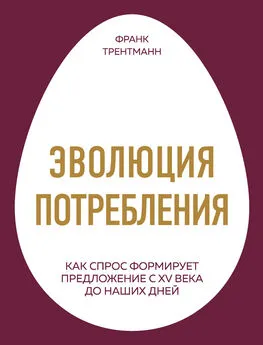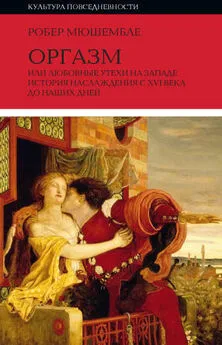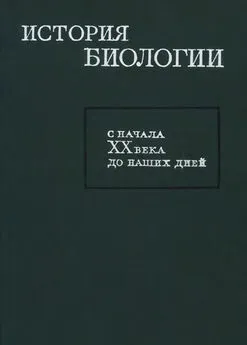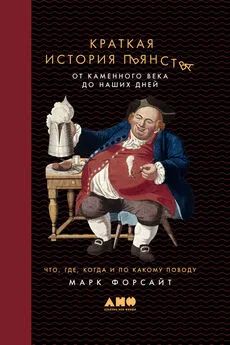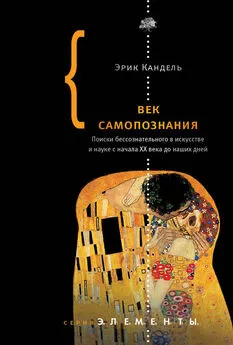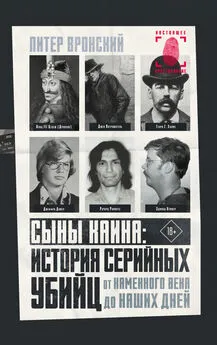Франк Трентманн - Эволюция потребления. Как спрос формирует предложение с XV века до наших дней
- Название:Эволюция потребления. Как спрос формирует предложение с XV века до наших дней
- Автор:
- Жанр:
- Издательство:Литагент 5 редакция «БОМБОРА»
- Год:2019
- Город:Москва
- ISBN:978-5-04-088674-6
- Рейтинг:
- Избранное:Добавить в избранное
-
Отзывы:
-
Ваша оценка:
Франк Трентманн - Эволюция потребления. Как спрос формирует предложение с XV века до наших дней краткое содержание
Эволюция потребления. Как спрос формирует предложение с XV века до наших дней - читать онлайн бесплатно ознакомительный отрывок
Интервал:
Закладка:
109
The Plum in the Golden Vase, or Chin P’ing Mei , 223, 383—4 для предыдущей цитаты, которая написана по транскрипционной системе Уэда-Джайлза, пиньинь в скобках.
110
Dauncey, «Sartorial Modesty», из: Berg & Starr, The Quest for Gentility in China , 140 f.
111
Многие аналитические заключения Бурдьё о парижской буржуазии 1960-х соотносятся с поздней эпохой Мин и эпохой Цин. См., к примеру, его рассуждения об «эстетической диспозиции» и о неисчезающей привлекательности «ученого мира с его правилами и практиками ради практик» для подростков и домохозяек из буржуазии, которым не достает экономического капитала взрослых мужчин. «Экономическая сила, – замечает он, – это в первую очередь такая сила, которая позволяет держать экономическую необходимость на расстоянии вытянутой руки. Вот почему она, как правило, утверждает себя, разрушая богатства, атакуя расточительное потребление, транжирство и все формы бесплатной роскоши»; Pierre Bourdieu, Distinction: A Social Critique of the Judgment of Taste (Cam-bridge, MA, 1984/1979), 54 f.
112
Craig Clunas, Empire of Great Brightness: Visual and Material Cultures of Ming China, 1368–1644 (London, 2007), 137—51.
113
Ho, «The Salt Merchants of Yangchou», особенно 156—60; чтобы транслитерация соответствовала современной системе пиньинь, я перевел имена из более старой системы Уэда-Джайлза, которая использовалась в «The Salt Merchants of Yangchou»: Ma Yüeh-kuan и Ma Yüehlu.
114
Timothy Brook, Vermeer’s Hat: The Seventeenth Century and the Dawn of the Global World (London, 2008), 74–83, цитата на с. 82.
115
Smith, Wealth of Nations , bk. IV, гл. 8, 179.
116
Charles Wilson, «Cloth Production and International Competition in the Seventeenth Century», Economic History Review 13, no. 2, 1960: 209—21. 90. C. Lis et al., eds., Guilds in the Early Modern Low Countries: Work, Power and Representation (London, 2006).
117
Тут я ссылаюсь прежде всего на: De Vries and Woude, First Modern Economy; см. также: DuPlessis, Transitions to Capitalism in Early Modern Europe ; Bas van Bavel, «The Organization of Markets as a Key Factor in the Rise of Holland», Continuity and Change , 27, no. 3, 2012, 347—78.
118
Jan De Vries, The Dutch Rural Economy in the Golden Age, 1500–1700 (New Haven, CT, 1974), 218—22.
119
Atwell, «Ming China and the Emerging World Economy», из: Twitchett & Mote, eds., Cambridge History of China, Vol VIII: The Ming Dynasty, 1368—44, Part 2 , 396.
120
Здесь и далее см.: Simon Schama, The Embarrassment of Riches (Berkeley, CA, 1988), chs. 3 & 5.
121
Clunas, Empire of Great Brightness , 141.
122
Brant van Slichtenhorst; см. Schama, The Embarrassment of Riches , 193–201.
123
Dyer, An Age of Transition? ; а также Kowaleski, «A Consumer Economy».
124
William Harrison, A Description of England (London, 1577/1587), гл. 8, 151—6, в доступе по ссылке: https://archive.org/ stream/elizabethanengla32593gut/pg32593.txt. Про моду того периода см.: Carlo Belfanti, «The Civilization of Fashion: At the Origins of a Western Social Institution», Journal of Social History 43, no. 2, 2009: 261—83.
125
Linda Levy Peck, Consuming Splendour: Society and Culture in Seventeenthcentury England (Cambridge, 2005).
126
Thirsk, Economic Policy and Projects . См. также: Sara Pennel, «Material Culture in Seventeenthcentury «Britain» из: Trentmann, ed., Oxford Handbook of the History of Consumption , гл. 4.
127
Daniel Defoe, A Tour through England and Wales , II (London 1727/1928), 126.
128
Jane Whittle & Elizabeth Griffiths, Consumption and Gender in the Early Seventeenthcentury Household: The World of Alice Le Strange (Oxford, 2013), 120—4, 144—53. О растущем ассортименте продуктов, их качестве и ценах см. далее: Thirsk, Economic Policy and Projects .
129
Lorna Weatherill, Consumer Behaviour and Material Culture in Britain, 1660–1760 (London, 1996, 2nd edn), таблица 3.3, 49.
130
Edward Roberts & Karen Parker, eds., Southampton Probate Inventories 1447–1575 (Southampton, 1992), Vol. I, 54—5.
131
Ann SmartMartin, «Makers, Buyers and Users: Consumerism as a Material Culture Framework», из: Winterthur Portfolio 28, no. 2/3, 1993: 141—57, p. 154. См. также: Cary Carson, «The Consumer Revolution in Colonial British America: Why Demand?» из: Of Consuming Interests: The Style of Life in the Eighteenth Century , eds. Cary Carson, Ronald Hoffman & Peter J. Albert (Charlottesville, VA, 1994), 483–697; а также Carole Shammas, The Pre industrial Consumer in England and America (Oxford, 1990).
132
Peter King, «Pauper Inventories and the Material Lives of the Poor in the Eighteenth and Early Nineteenth Centuries», из: Chronicling Poverty: The Voices and Strategies of the English Poor, 1640–1840 , eds. Tim Hitchcock, Peter King & Pamela Sharpe (New York, 1997), 155—91.
133
John Styles, «Lodging at the Old Bailey: Lodgings and Their Furnishing in Eighteenthcentury London», из: Gender, Taste and Material Culture in Britain and North America, 1700–1830 , eds. John Styles & Amanda Vickery (New Haven, CT, 2006).
134
Charles P. Moritz, Travels, Chiefly on Foot, through Several Parts of England in 1782 (London, 1797, 2nd edn), 24.
135
Shane White & Graham White, «Slave Clothing and AfricanAmerican Culture in the Eighteenth and Nineteenth Centuries», Past & Present 148, 1995: 149–186, цитата на с. 156.
136
See Frank Salomon, «Indian Women of Early Quito as Seen through Their Testatements», The Americas 44, no. 3, 1988: 325—41, особенно 334—7; а также Elena Philips, «The Iberian Globe», из: Amelia Peck, ed., Interwoven Globe: The Worldwide Textile Trade, 1500–1800 (New York, 2013), 28–45.
137
John Irwin & P. R. Schwartz, Studies in Indo European Textile History (Ahmedabad, 1966). О распространении хлопка по всему миру см.: Sven Beckert, Empire of Cotton: A New History of Global Capitalism (London, 2014).
138
«First Report» ( 24 Dec. 1783), in Reports from the Committee on Illicit Practices Used in Defrauding the Revenue (1783—4), Vol. XI, цитата на с. 228, данные из приложения 4, 2041. См. также: William J. Ashworth, Customs and Excise: Trade, Production and Consumption in England, 1640–1845 (Oxford, 2003), 149—50. О французских контрабандистах: Michael Kwass, Contraband: Louis Mandrin and the Making of a Global Underground (Cambridge, MA, 2014), в особенности 106—8, 218—20; а также Giorgio Riello, Cotton: The Fabric That Made the Modern World (Cambridge, 2013), 121. О контрабандной торговле шелком см.: William Farrell, «Silk and Globalization in Eighteenthcentury London», PhD thesis, Birkbeck College/ University of London, 2013, 148—95.
139
Maxine Berg, «In Pursuit of Luxury: Global History and British Consumer Goods in the Eighteenth Century», Past & Present 182, no. 1, 2004: 85—142.
140
J. F., The Merchant’s Ware House La id Open: Or, the Plain Dealing Linnen Draper. Shewing How to Buy All Sorts of Linnen and Indian Goods (London, 1696), A3, 7, 27, 29–30. О разнообразии узоров, доступных даже более бедным потребителям, см. John Styles: Threads of Feeling: The London Foundling Hospital’s Textile Tokens, 1740—70 (London, 2010).
141
О Франции: Roche, Culture of Clothing , 12639. О шелке см. Natalie Rothstein: «Silk in the Early Modern Period, c . 1500–1780», из: D. T. Jenkins, The Cambridge History of Western Textiles (Cambridge, 2003), 528—61; а также Farrell, «Silk and Globalization in Eighteenth-century London». См. также: S. Horrell, J. Humphries & K. Sneath, «Consumption Conundrums Unravelled», из: Economic History Review (online version 17 Dec. 2014).
142
Roger-Pol Droit, How are Things? A Philosophical Experiment , trans. Theo Cuffe (London, 2005), 52.
143
Четырнадцать дукатов в 1546 году, см. Patricia Allerston: «Clothing and Early Modern Venetian Society», из: Continuity and Change 15, no. 3, 2000: 367—90, на с. 372.
144
1765, цитата из: Beverly Lemire, Fashion’s Favourite: The Cotton Trade and the Consumer in Britain, 1660–1800 (Oxford, 1991), 94. См. также: Prasannan Parthasarathi & Giorgio Riello, eds., The Spinning World: A Global History of Cotton Textiles, 1200–1850 (Oxford, 2009).
145
Roche, Culture of Clothing , 108—11; а также John Styles, The Dress of the People: Everyday Fashion in Eighteenthcentury England (New Haven, CT, 2007).
146
Andrew Bevan & D. Wengrow, eds., Cultures of Commodity Branding (Walnut Creek, CA, 2010).
147
McKendrick, из McKendrick, Brewer & Plumb, Birth of a Consumer Society , 141.
148
Phyllis G. Tortora & Keith Eubank, Survey of Historic Costume: A History of Western Dress (New York, 1998, 3rd edn), 147—9, 158—60.
149
Цитата из: Om Prakash, «The Dutch and the Indian Ocean Textile Trade», из: Parthasarathi & Riello, eds., The Spinning World , 149.
Читать дальшеИнтервал:
Закладка:
